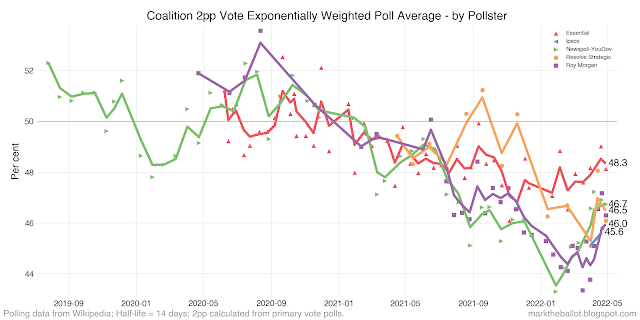One week after the election, and we are still not absolutely clear on whether Labor can form majority government (though it does seem likely). My conservative attribution of seats is as follows.
- Labor: 74 - (Adelaide, Ballarat, Barton, Bean, Bendigo, Bennelong, Blair, Blaxland, Boothby, Brand, Bruce, Burt, Calwell, Canberra, Chifley, Chisholm, Cooper, Corangamite, Corio, Cowan, Cunningham, Dobell, Dunkley, Eden-Monaro, Fenner, Franklin, Fraser, Fremantle, Gellibrand, Gorton, Grayndler, Greenway, Hasluck, Hawke, Higgins, Hindmarsh, Holt, Hotham, Hunter, Isaacs, Jagajaga, Kingsford Smith, Kingston, Lalor, Lilley, Lyons, Macarthur, Macquarie, Makin, Maribyrnong, McEwen, McMahon, Moreton, Newcastle, Oxley, Parramatta, Paterson, Pearce, Perth, Rankin, Reid, Richmond, Robertson, Scullin, Shortland, Solomon, Spence, Swan, Sydney, Tangney, Watson, Werriwa, Whitlam, Wills)
- Coalition: 58 - (Aston, Banks, Barker, Bass, Berowra, Bonner, Bowman, Braddon, Bradfield, Calare, Canning, Capricornia, Casey, Cook, Cowper, Dawson, Deakin, Dickson, Durack, Fadden, Fairfax, Farrer, Fisher, Flinders, Flynn, Forde, Forrest, Gippsland, Grey, Groom, Herbert, Hinkler, Hughes, Hume, La Trobe, Leichhardt, Lindsay, Longman, Lyne, Mallee, Maranoa, McPherson, Menzies, Mitchell, Monash, Moncrieff, Moore, New England, Nicholls, O'Connor, Page, Parkes, Petrie, Riverina, Sturt, Wannon, Wide Bay, Wright)
- Independent: 10 - (Clark, Curtin, Fowler, Goldstein, Indi, Kooyong, Mackellar, North Sydney, Warringah, Wentworth)
- Green: 3 - (Griffith, Melbourne, Ryan)
- Other: 2 - (Kennedy, Mayo)
And my unallocated seats are: Brisbane, Gilmore, Lingiari, and Macnamara. These seats have the following first preferences.
Brisbane and Macnamara will be won by either the Greens or Labor, based on preference flows. Which ever party comes third in the preferential count will determine this outcome. The AEC is about half-way through its three candidate counts in Brisbane and Macnamara. At this point in the count, Labor is in first position, and it is likely to win Macnamara. The Greens are just ahead of Labor for second position in Brisbane, and likely to win on Labor preferences.
The next chart is based on the two-candidate preferred (TCP) counts from the AEC. The counts for Brisbane and Macnamara may have the wrong candidates. This will be determined by the three-candidate counts currently underway.
My system has not allocated Lingiari, because the TCP vote count is low. However, this seat is highly likely to go to Labor.
Gilmore will continue to be counted for the rest of next week, until postal votes close. For sake of the next chart, let's assume the Coalition remains ahead.
Based on the current state of the count, the most likely outcome looks like:
But if Gilmore flips, it will be Labor on 77 and the Coalition on 58.


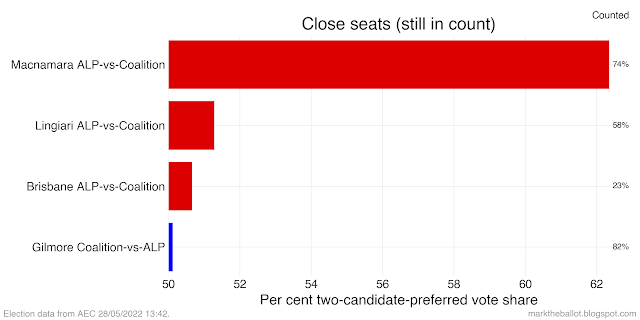










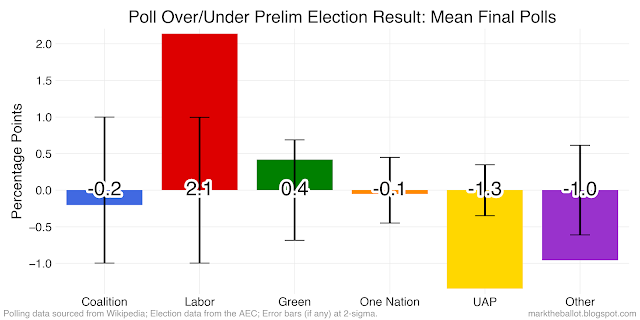









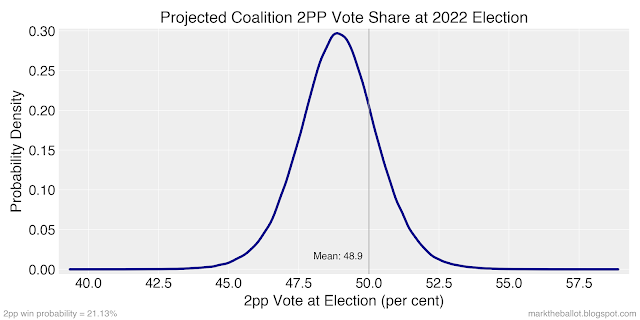






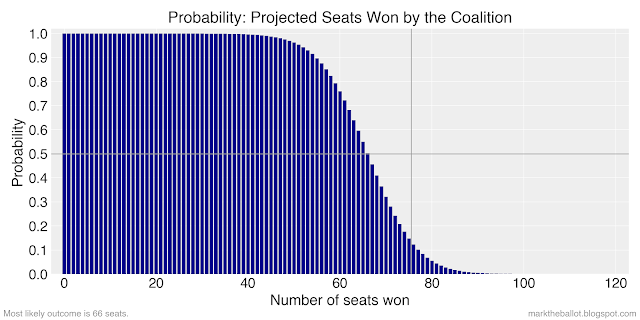








.png)












